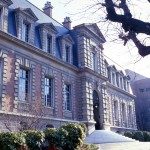About
Healthcare-associated infections (HAI) have been occurring with increased incidence and severity over the last decades, becoming a major public health issue. A wide range of control strategies is already available, including hygiene measures, barrier precautions, antimicrobial stewardship, vaccination, patient isolation, cohorting, etc., based on screening programmes and surveillance systems. However, faced with the continued spread of HAI, the implementation of these strategies needs to be optimized and new control strategies must be considered and evaluated. Mathematical modelling and computer simulations are powerful tools which can help public-health practitioners examine possible courses of dissemination of HAI and assess the efficacy of control strategies.
The successful diffusion of a pathogen in a healthcare system results from a combination of processes operating at different scales. The way human populations are structured within and outside health-care institutions and the networks of patient transfers between wards and between institutions are layers that intrinsically interact with the biological layer of pathogen transmission and with the microbiological population dynamics layer of within-host pathogen selection. The processes operating at those different scales may have opposite effects on HAI dynamics which make HAI spread prediction and control strategies assessment difficult when considering only one scale.
In this context, the objective of the SPHINx project is to propose a global approach to better understand and control the spread of HAI integrating various scales (hospital wards, hospitals and healthcare facilities networks, community) by developing a multi-scale computational framework.
By increasing our knowledge of the healthcare-associated infection dynamics at various scales, the outputs of this project should contribute to design efficient and cost-effective integrated infection control measures at an individual, local, regional and national level.



